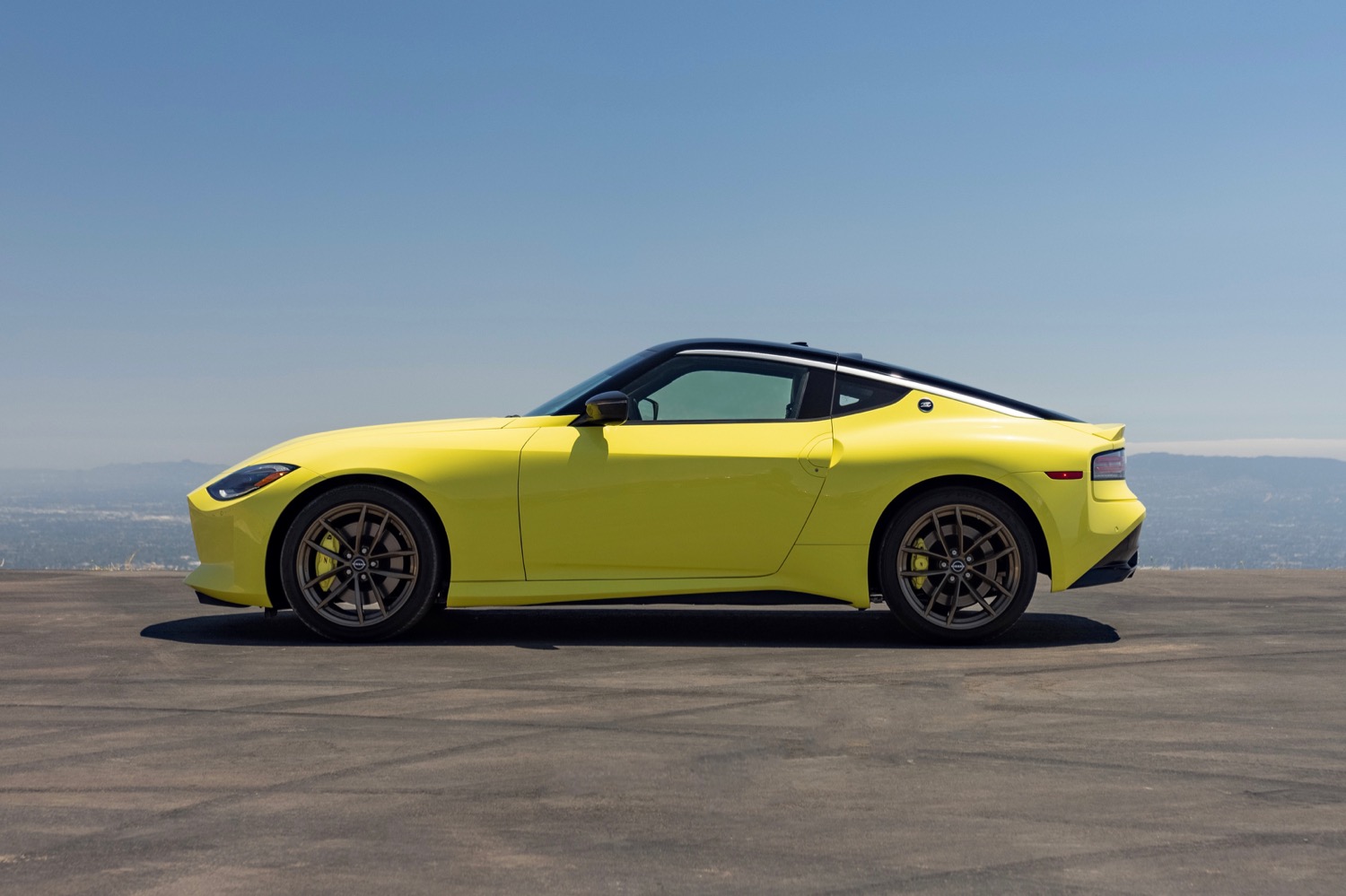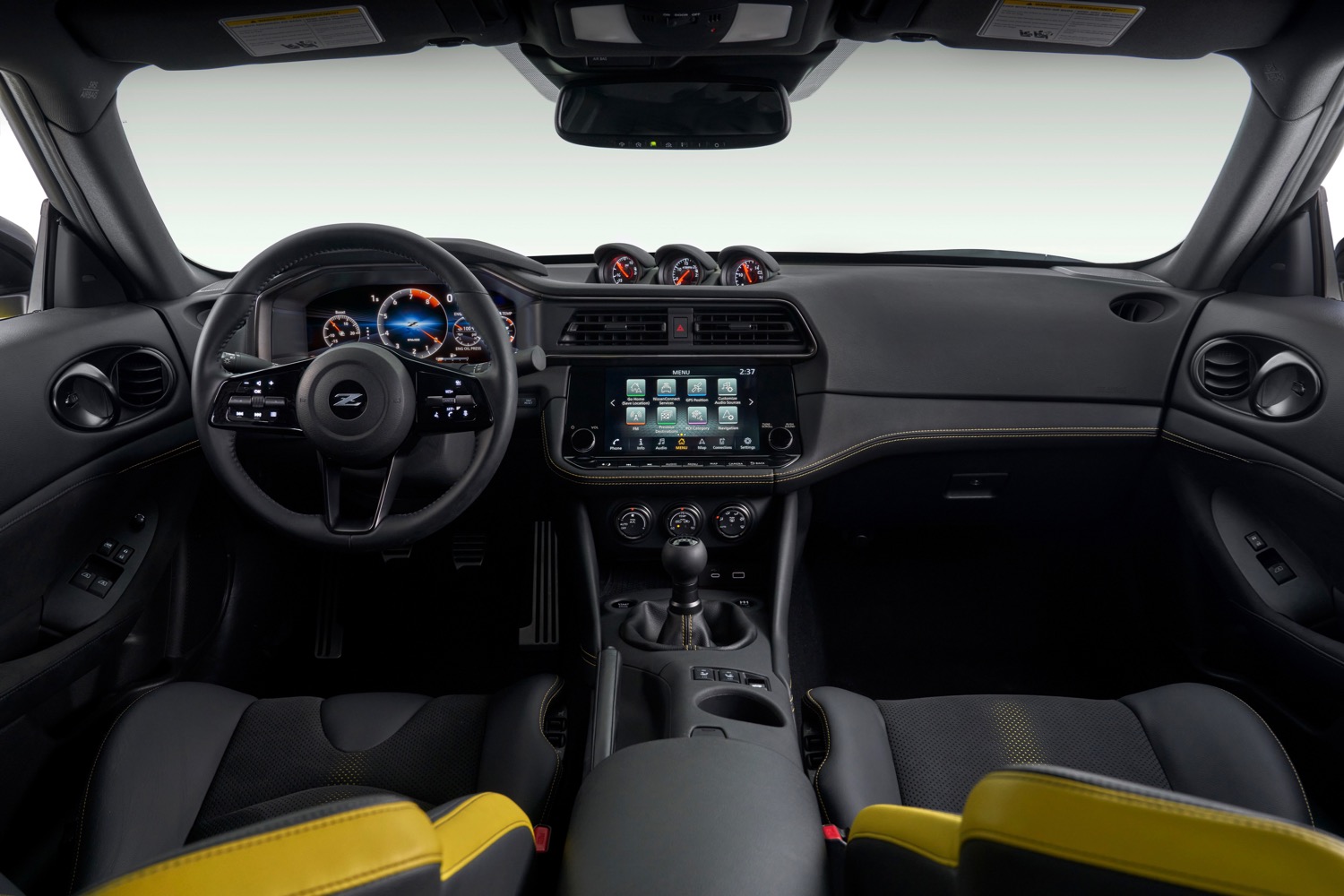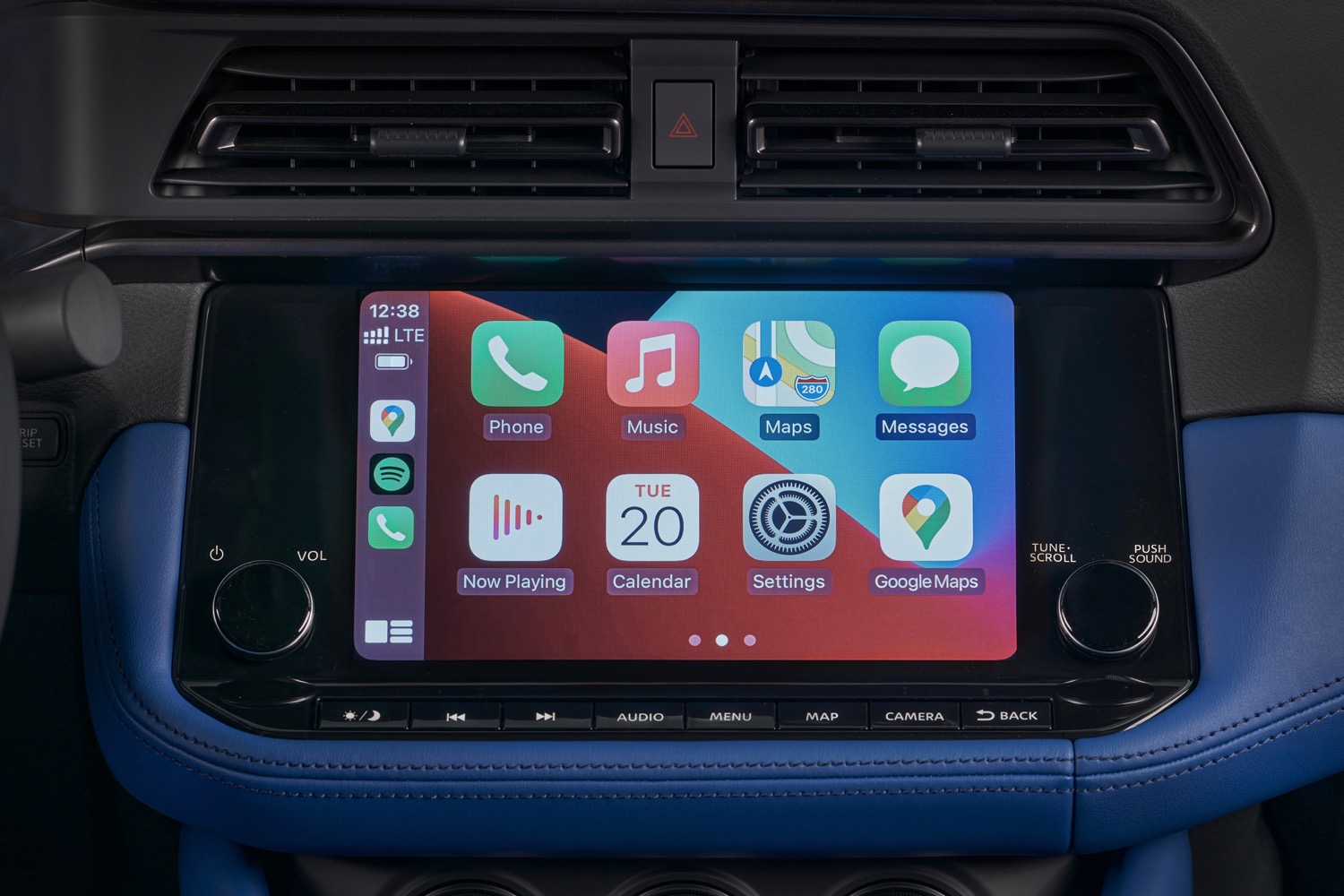No car has tested the maxim “if it’s not broken, don’t fix it” like the Nissan 370Z. The two-seat sports car has had one of the longest production runs of any vehicle in recent memory. It was unveiled in late 2008, and has soldiered on with only minor updates since then. Even in old age, the 370Z wasn’t a bad car, but Nissan needed to keep pace with modern tech to prevent one of its most hallowed nameplates from getting stale.
Unveiled in New York City today, and scheduled to go on sale in the United States in spring 2022, the 2023 Nissan Z (the numerical prefix has been dropped) inherits a legacy that goes back over 50 years. The new Z is the successor not only to the 370Z, but also to the Datsun 240Z, which became an instant classic when it was unveiled in the Big Apple in 1969.
Over the ensuing decades and half-dozen generations of cars, the letter Z has come to represent affordable performance to car enthusiasts. Nissan has coasted along on that good will for over a decade now, even as the auto industry has experienced a tech revolution. So now that a new Nissan is finally here, will it be worth the wait?
Design
For its first new Z in over a decade, Nissan chose to look backward. The 2023 Z is a remix of styling cues from different past Z models. Previewed by the Z Proto concept car unveiled last year, the overall shape is a throwback to the Datsun 240Z, while the LED headlights have two half circles, specifically referencing the Japan-only 240ZG of the 1970s. The LED taillights move things forward a couple of decades, taking inspiration from the Z32-generation Nissan 300ZX of the 1990s.
The changes are only skin deep, however. The 2023 Nissan Z uses a modified version of the old 370Z body shell. You can tell by the shape of the rear quarter windows, which are unchanged from the previous-generation car, as well as the specifications. The 2023 Z is a bit longer than the 370Z, but width and height are unchanged, along with the 100.4-inch wheelbase. Both cars also have identical headroom and legroom, according to Nissan.
Still, the new Z’s two-seat interior should be a nicer place than the old car’s, mostly because, unlike the old cabin, it was designed around modern tech features. For example, the steering-wheel controls on the 370Z seemed like an afterthought, but Nissan claims the 2023 Z’s “deep-dish” steering wheel will improve on that. The new car also gets seats designed with lessons learned from the Nissan GT-R, the automaker’s performance flagship. Cloth upholstery will be standard, with leather optional.
Tech
The Nissan 370Z was a great car for driving enthusiasts, but not tech enthusiasts. The 2023 Z aims to improve on that with a standard 8.0-inch touchscreen, 12.3-inch digital instrument cluster, and Apple CarPlay/Android Auto connectivity. Those are big upgrades, considering that the 370Z didn’t even come with a touchscreen as standard equipment.
Moving up from the base Z Sport model to the Z Performance will also net a 9.0-inch touchscreen, navigation, and a built-in Wi-Fi hot spot.
Unlike the 370Z, all 2023 Z models also get a decent array of standard driver aids, including automatic emergency braking (with pedestrian detection), blind-spot monitoring, lane-departure warning, rear cross-traffic alert, automatic high beams, and forward-collision warning.
Specs
Big changes were made under the hood as well. The previous naturally aspirated 3.7-liter V6 engine has been replaced with a 3.0-liter twin-turbocharged V6. It’s the same engine used in the Infiniti Q60 coupe and Q50 sedan, from Nissan’s luxury brand. It’s also a bit of a throwback to the Z32 Nissan 300ZX, which was offered with a 3.0-liter twin-turbo V6 engine as well.
This is a smaller engine than before, but the twin turbos allow it to generate 400 horsepower and 350 pound-feet of torque, compared to the 332 hp and 270 lb.-ft. of the outgoing 370Z. Consequently, Nissan claims the 2023 Z will beat the outgoing model’s zero to 60 mph time by 15%.
Like every previous generation, the 2023 Z is rear-wheel drive because of the handling benefits that offers. It also continues with a six-speed manual transmission and Nissan’s SynchroRev Match feature. Introduced on the previous-generation 370Z, it automatically blips the throttle to make shifts smoother. Alternatively, you can get a nine-speed automatic transmission with paddle shifters and launch control.
Nissan claims to have stiffened up the body shell, which, along with wider front tires, allows for a 13% improvement in cornering g-forces, according to the company. However, Nissan didn’t quote a curb weight for the new model, and we’re very curious to see if it’s gained weight. The new Z’s extra power might compensate for increased poundage, but the lighter a car is, the better it feels in the corners.
Rivals
Nissan hasn’t released pricing information yet, only saying that the 2023 Z will be available in Sport and Performance flavors, along with a Proto Spec special edition. Limited to just 240 units, it will have styling features inspired by the Z Proto concept, including yellow brake calipers and bronze 19-inch Rays wheels.
While it’s unclear how they will compare on price, it seems likely that the Z will compete against the Toyota Supra, another two-seat Japanese sports car with a heritage nameplate. The Z and Supra have traditionally been considered rivals, but they haven’t been on sale in the U.S. at the same time since the 1990s.
Like the latest Supra, the 2023 Nissan Z will also be a sports car in-betweener. It’s bigger and more powerful than the Mazda MX-5 Miata or Subaru BRZ/Toyota GR 86 twins, but not quite on the same level of the Porsche Cayman or Chevrolet Corvette.
However, the biggest test may be convincing tech-savvy car shoppers, who may have written the Z off as a has-been, to give this new model a try.
Editors' Recommendations
- Nissan wants the 2023 Ariya to be its comeback EV, but the bar has been raised
- Hyundai Ioniq 5 first drive review: Retro modern
- 2022 Toyota GR 86 first drive: Old-school thrills meet modern tech
- Apple reportedly approached Nissan about possible EV project
- Rumor links Xiaomi to a Galaxy Z Flip-style folding smartphone






